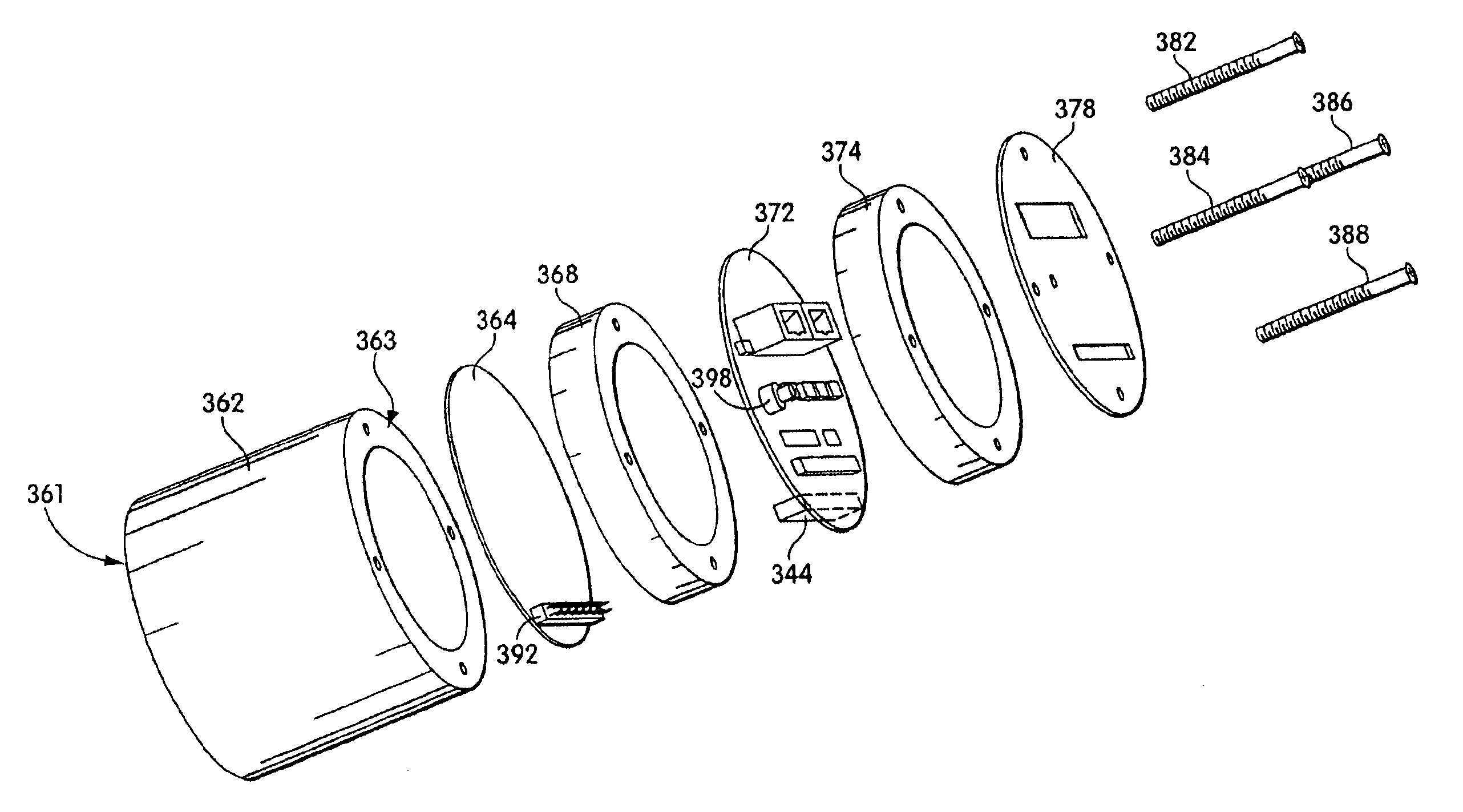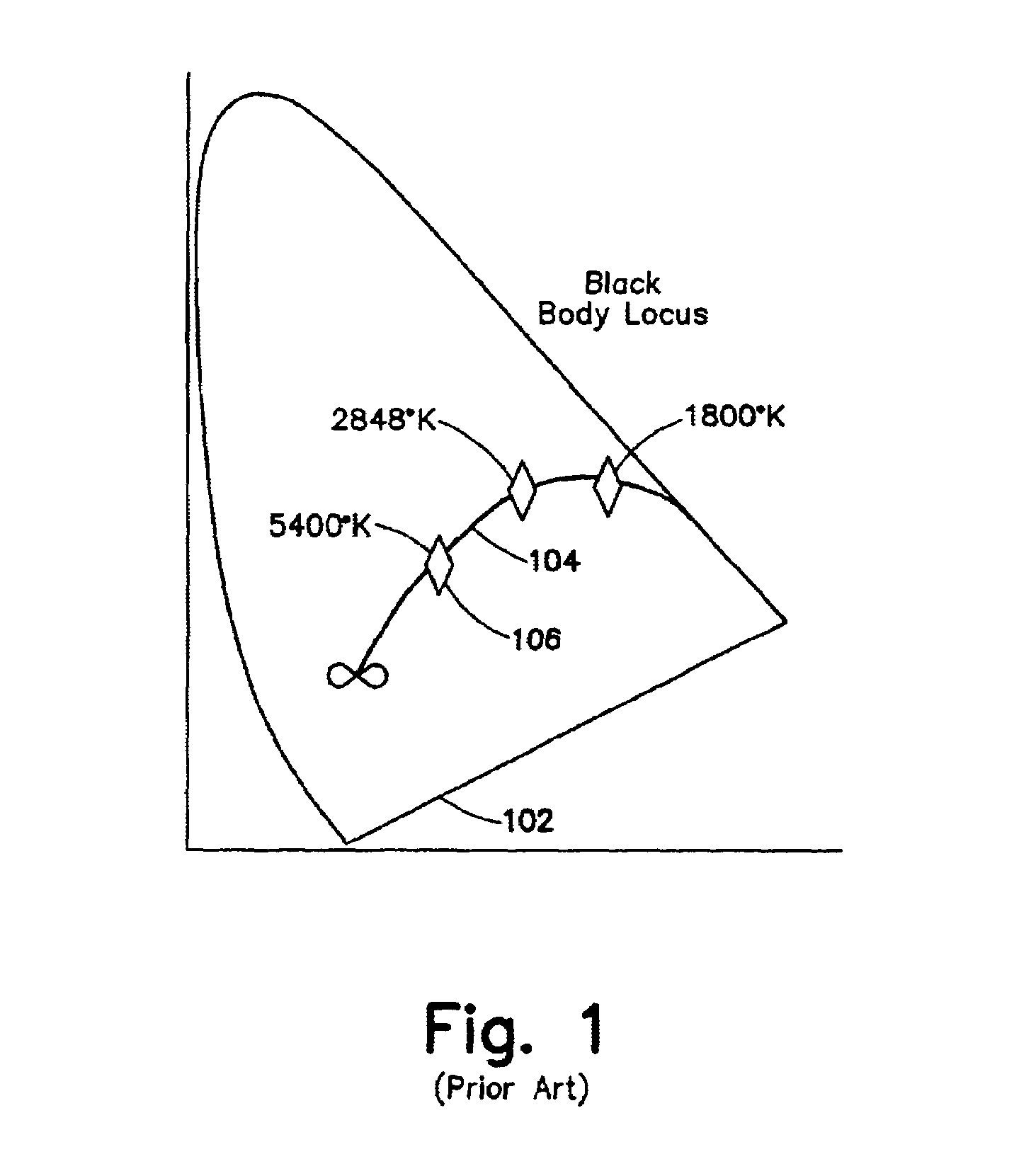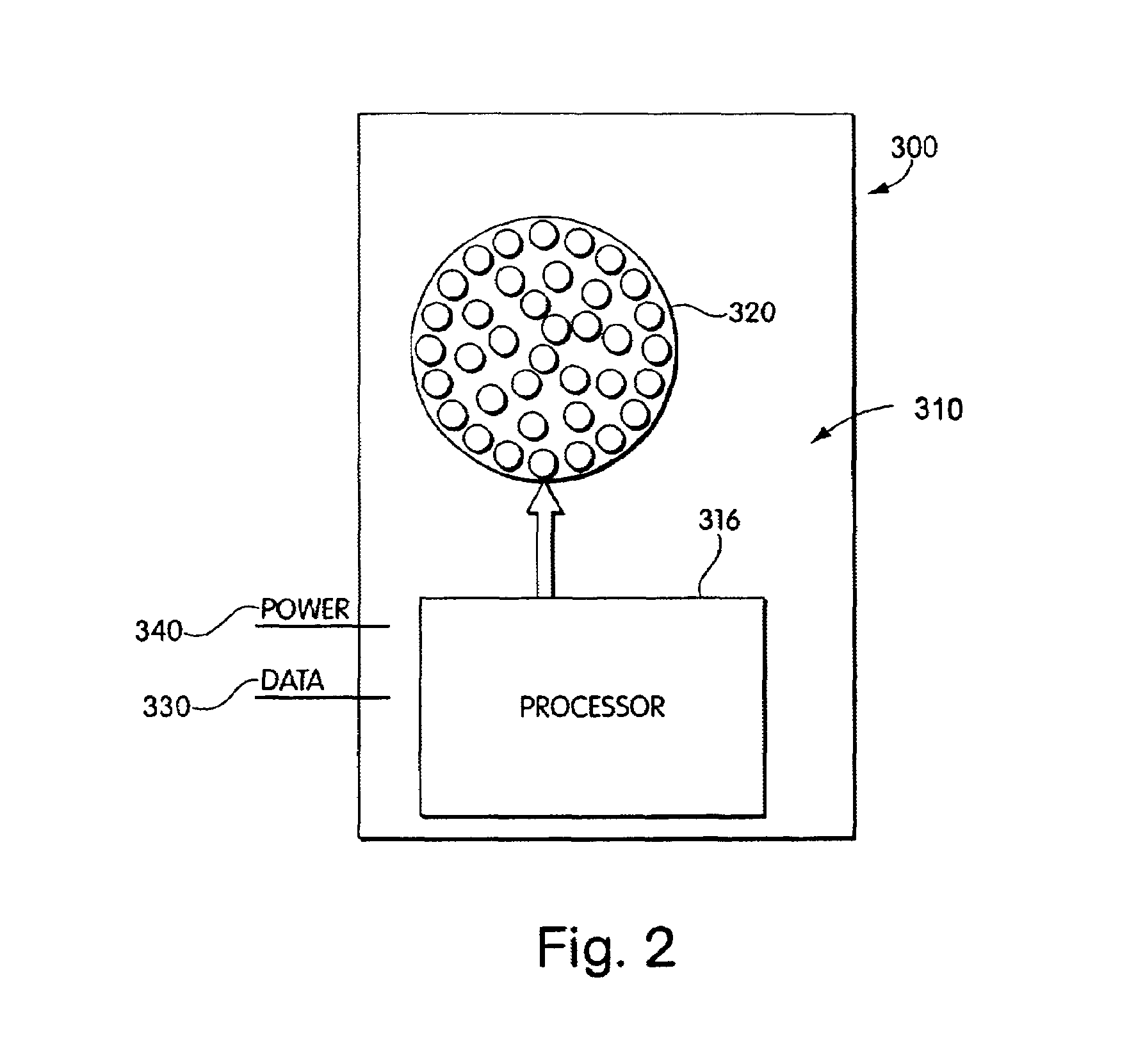Systems and methods for generating and modulating illumination conditions
a technology of illumination conditions and illumination conditions, applied in the direction of lighting and heating equipment, semiconductor devices of light sources, lighting applications, etc., can solve the problems of unnatural human appearance, creepy, creepy, and often a little disgusting
- Summary
- Abstract
- Description
- Claims
- Application Information
AI Technical Summary
Benefits of technology
Problems solved by technology
Method used
Image
Examples
Embodiment Construction
[0068]The description below pertains to several illustrative embodiments of the invention. Although many variations of the invention may be envisioned by one skilled in the art, such variations and improvements are intended to fall within the scope of this disclosure. Thus, the scope of the invention is not to be limited in any way by the disclosure below.
[0069]As used in this document, the following terms generally have the following meanings; however, these definitions are in no way intended to limit the scope of the term as would be understood by one of skill in the art.
[0070]The term “LED” generally includes light emitting diodes of all types and also includes, but is not limited to, light emitting polymers, semiconductor dies that produce light in response to a current, organic LEDs, electron luminescent strips, super luminescent diodes (SLDs) and other such devices. The term LEDs does not restrict the physical or electrical packaging of any of the above and that packaging coul...
PUM
 Login to View More
Login to View More Abstract
Description
Claims
Application Information
 Login to View More
Login to View More - R&D
- Intellectual Property
- Life Sciences
- Materials
- Tech Scout
- Unparalleled Data Quality
- Higher Quality Content
- 60% Fewer Hallucinations
Browse by: Latest US Patents, China's latest patents, Technical Efficacy Thesaurus, Application Domain, Technology Topic, Popular Technical Reports.
© 2025 PatSnap. All rights reserved.Legal|Privacy policy|Modern Slavery Act Transparency Statement|Sitemap|About US| Contact US: help@patsnap.com



